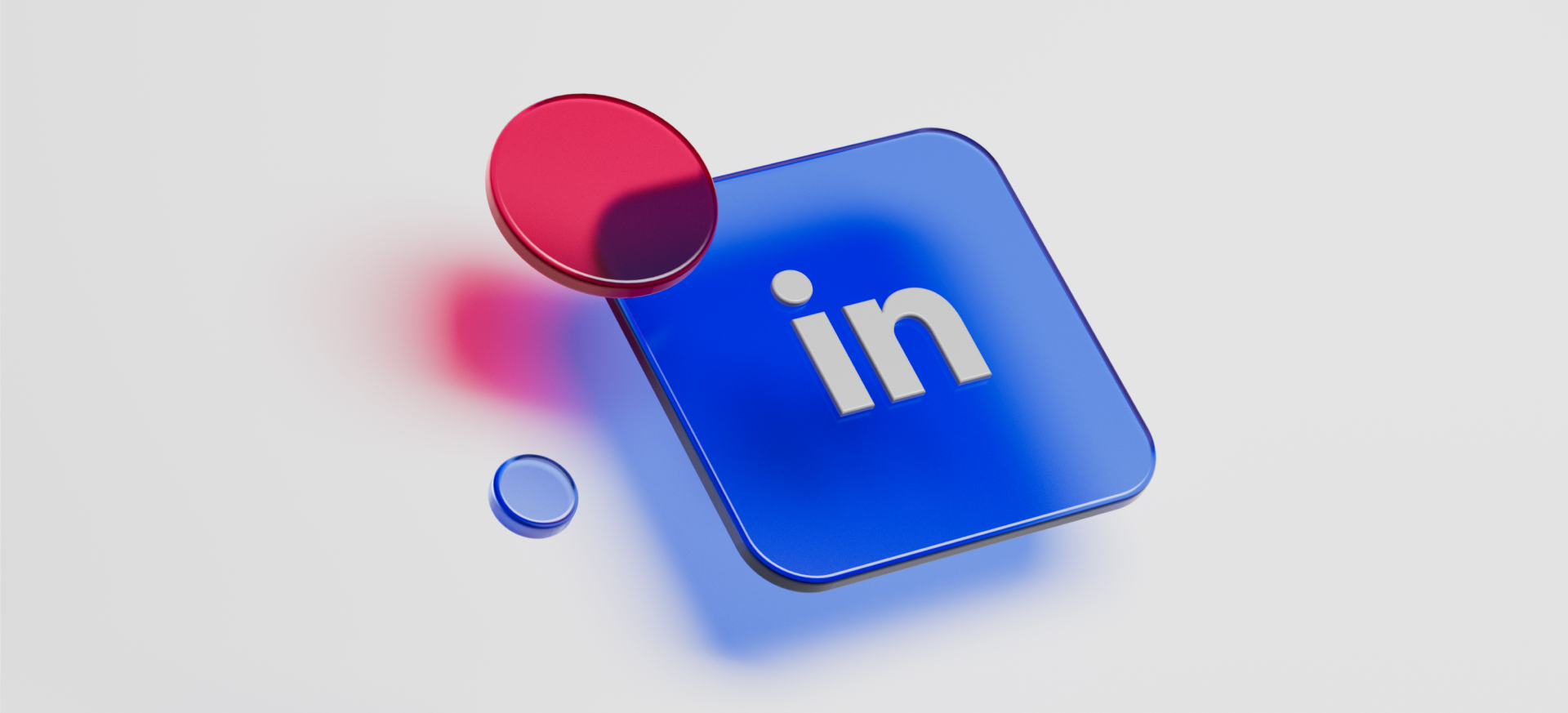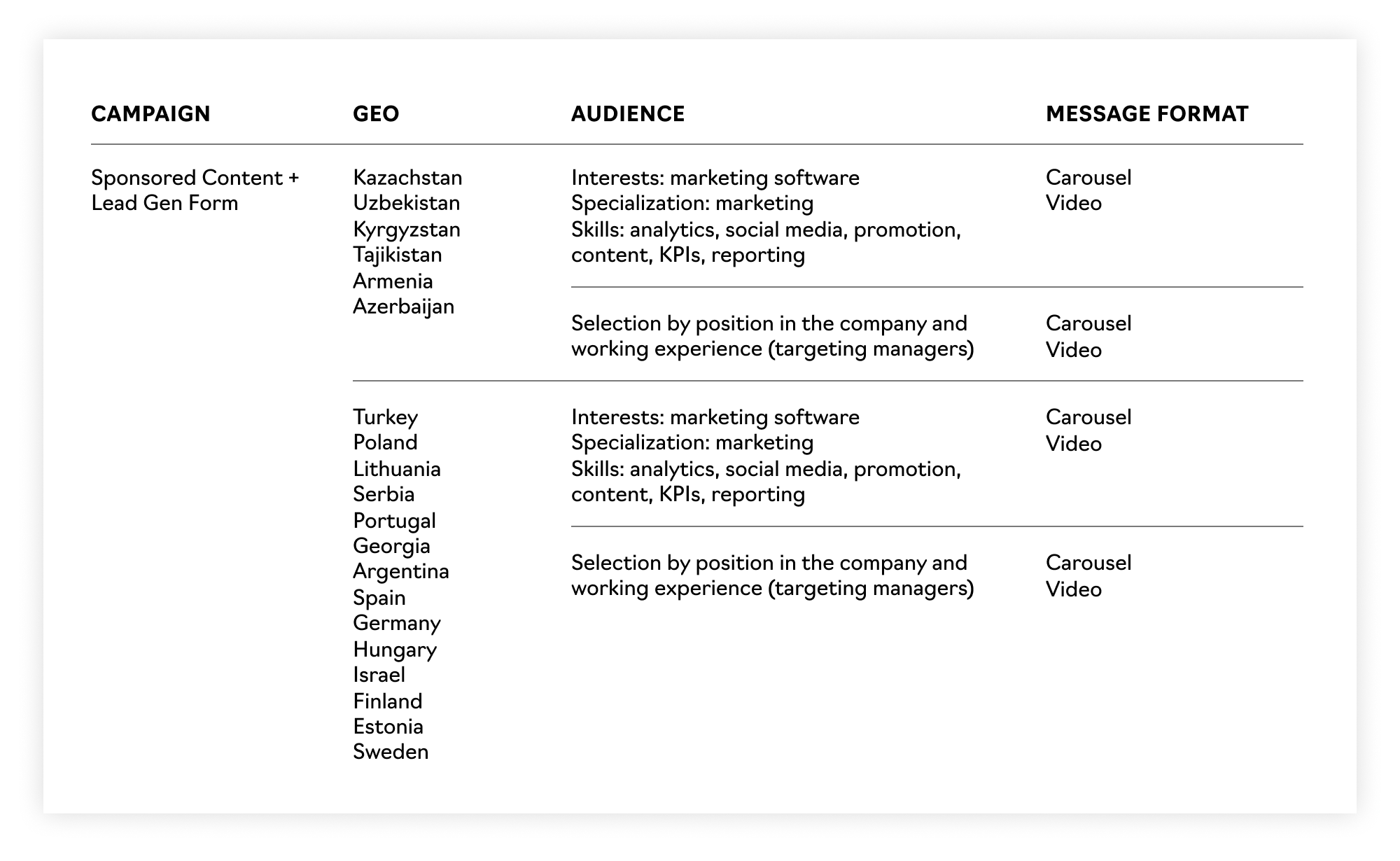LiveDune LinkedIn Promotion: Strategies for Finding B2B Leads


LiveDune is a multifunctional social media analytics service that provides convenient statistics, detailed reports, and essential tools for managing social media accounts, including auto-posting and message/comment monitoring.
LiveDune is also a long-time partner of ours, and we have been using the service extensively.

LiveDune approached us with two objectives:
- To attract new clients to its most profitable plans—Business and Agency.
- To find new traffic sources
We chose LinkedIn as our key channel. It offers detailed audience targeting by job title, skills, position level within a company, and even company size. These features align well with LiveDune’s plans, which are ideal for medium and large teams, large SMM agencies, and brands.
Strategy
We began by defining our approach to user acquisition. Unlike other platforms, LinkedIn is relatively costly for user acquisition, so the most effective method here is lead generation. However, since LiveDune already offers a free trial period, why would a user fill out an application for a demo service?
Meanwhile, the LiveDune team was assembling a sales team dedicated to Business and Agency clients. This team would assist clients in selecting analytics services, showcasing LiveDune’s unique capabilities that address specific customer needs.
This led us to an idea: our ads campaign could also serve as a testing ground for the sales team to practice a personalized approach to clients.
Targets
We chose a lead-generation strategy, allowing users to open a lead form and submit an application if they are interested in the offer. As a backup, we selected a direct-messaging approach to communicate with users via DMs.
We have used two groups for GEO targeting:
- CIS countries
Armenia, Azerbaijan, Kazakhstan, Kyrgyzstan, Turkmenistan, and others. - Other countries where expats live:
Turkey, Georgia, Israel, Portugal, Argentina, and others.
Creatives
We wanted to show the power of LiveDune: how analysis of statistics can increase user engagement, as well as how social listening can influence sales. Also, we wanted to convey the core philosophy of LiveDune of making business decisions based on reliable figures. So, we’ve structured all tools of LiveDune and their benefits and added feedback from our customers.
As a result, we’ve created a working document, which helped us to generate visual and motion concepts for ad campaigns. Eventually, we’ve chosen two ad formats: carousel and video.
Audience
Audience selection was especially rewarding for our targeting specialist. LinkedIn allows for precise distinctions between roles like content manager, copywriter, community manager, and social media specialist. These detailed segmentation options helped us reach professionals who work with analytics, gather statistics, and interpret data. We also segmented by industry and company size.
We divided our potential customers into two main groups:
- Those who use the service as specialists
- Those who make strategic development decisions
1. How was the strategy implemented?
We targeted both audience groups — specialists and decision-makers — in each geographic region. For the ad campaigns, we used two types of creatives: a carousel and a video.

We received initial responses and seven completed lead forms within the first few days of the campaign. We first reviewed the metrics to understand behavior patterns among executives and specialists. However, after these initial responses, we didn’t receive any new leads for several days, despite users clicking on ads and inquiring about the company profile.
With a limited test period and rising cost per lead, we decided to pivot our approach and switch to direct message (DM) advertising.
2. What did we test during the campaign?
Running a DM ad campaign was a risk, but together with LiveDune, we decided that the benefits—solving work tasks with a user-friendly analytics service—outweighed the potential risk of being perceived as spam. The message included a call to request a service demo, and we logged responses in Google Sheets.
Communicating with international customers by phone proved inconvenient and costly for sales managers, who preferred text-based communication on messaging apps. The LiveDune team then suggested asking users to link their LinkedIn profile, allowing managers to contact potential customers directly on the platform.
A key barrier for sales managers was that LinkedIn requires a connection request to be accepted before messaging users outside of paid advertising. This feature made ongoing communication challenging on the platform.
Our focus on the InMail campaign proved effective. We began to receive active feedback from our target audience. During the campaign, specialists clicked on the ads frequently (resulting in a higher CTR), while decision-makers were more likely to open and submit forms. As expected, traffic from CIS countries was also more cost-effective.
We compared the effectiveness of impressions by campaign type: the conversion rate from lead form openings to submissions in a lead-gen campaign was 3%, while in the InMail campaign, it reached 52%, with a CPL 19 times lower.
3. Key Factors for an Effective LinkedIn Ad Campaign Launch
-The InMail campaign type is only available outside the EU. -Maintaining a strong company profile is crucial, as it builds trust—users will visit it and form judgments. -Be mindful of potential targeting inaccuracies: selecting a primary language in targeting settings doesn’t guarantee that users are fluent in it.
We exceeded our plan by 114% and reduced CPL by 12.5%. Conversions were split between lead gen campaigns (30%) and lead forms from messages (70%).
Conclusions and development plan for the advertising campaign
LinkedIn is an effective tool for reaching audiences based on position, profile, or industry sector. It also remains a professional network where users showcase their skills, experience, and achievements to make valuable connections. Sending DMs proved successful, but it’s important to remember that this approach won’t work for every campaign. In LiveDune’s case, it felt native—we targeted marketers and social media specialists, offering them a service that could be beneficial in their daily work. Each niche requires its own unique approach to promotion. The key is to be bold, experiment, and explore new traffic sources.
Comments from the LiveDune team
LinkedIn was an experiment for us. We wanted to test the new source of leads and see how the sales department could manage this flow. So, we worked on equal terms with the sales managers, providing them with leads they needed to communicate with.
What worked: